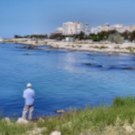Major 7.1 quake strikes off Chile's coast, near Santiago
-
Recently Browsing 0 members
- No registered users viewing this page.
-
Topics
-
-
Popular Contributors
-
-
Latest posts...
-
7,793
-
146
Take back the Sanctuary DC and return it to the Feds...
All of the lies perpetuated by the left are coming back in significant fashion! I'd love to see ICE Enforcement reach into the largest LE agency and with the help of US prosecutors dismantle Sanctuary Criminal corruption -
14
Community Indian Tourist and Woman in Beachfront Dispute
More quality tourists trying to try before they buy padded bras very common here or maybe chicken fillets thats if it was a female what no gold neclaces go home and try that -
45
Crime British Woman Sentenced in Germany Over Thai Drug Smuggling Case
It isnt legal where she was. Had it been a very small quantity I would say a fine and a slap on the wrist. What she had was for distribution. -
86
Crime British Man Fined for Cutting Off Pattaya Ambulance
That is not what their highway code states, so they were wrong. Ignorance and poor education tends to breed an arrogance and self-belief that can ultimately prove fatal as we see daily here. -
45
Crime British Woman Sentenced in Germany Over Thai Drug Smuggling Case
I dont follow your habits but thanks for your concern
-
-
Popular in The Pub









Recommended Posts
Create an account or sign in to comment
You need to be a member in order to leave a comment
Create an account
Sign up for a new account in our community. It's easy!
Register a new accountSign in
Already have an account? Sign in here.
Sign In Now